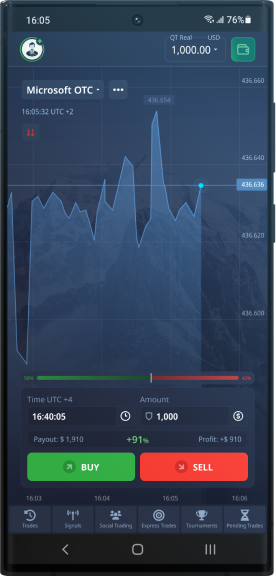
In the world of online trading, utilizing the right tools can significantly affect your success. For traders on platforms like Pocket Option, indicators serve as essential tools that help analyze market trends and make informed trading decisions. If you’re looking to enhance your trading experience, understanding Pocket Option indicators is crucial. For any inquiries regarding these tools, feel free to pocket option indicators contact Pocket Option.
What Are Pocket Option Indicators?
Pocket Option indicators can be described as mathematical calculations that are plotted on price charts to help traders identify potential buy and sell signals. These indicators analyze market trends by evaluating price movements over time and are crucial for both beginners and experienced traders alike.
Types of Pocket Option Indicators
There are various types of indicators available on the Pocket Option platform. Each type serves a different purpose and can be employed based on the trading strategy you choose. The most popular types include:
1. Trend Indicators
Trend indicators help identify the overall direction of the market. They can confirm the strength and sustainability of a trend. Common trend indicators include:
- Moving Averages (MA): This indicator smooths out price data to create a trend-following indicator. It can be simple or exponential, with the latter giving more weight to recent prices.
- Moving Average Convergence Divergence (MACD): This indicator shows the relationship between two moving averages of a security’s price, helping traders spot potential buy or sell opportunities.
2. Momentum Indicators
Momentum indicators measure the rate of change in price movements, helping traders identify potential reversals or continuations in trends. Key examples include:
- Relative Strength Index (RSI): This momentum oscillator measures the speed and change of price movements, indicating overbought or oversold conditions.
- Stochastic Oscillator: This measures the closing price of a security relative to its price range over a specific period, providing insights into momentum and potential reversals.

3. Volume Indicators
Volume indicators assess the strength of a price movement by analyzing the amount of trading activity. A strong price movement accompanied by a high volume often indicates a more sustainable trend. Prominent volume indicators include:
- On-Balance Volume (OBV): This indicator uses volume flow to predict changes in stock price, suggesting that volume precedes price movements.
- Accumulation/Distribution Line: This indicator measures the cumulative flow of volume, helping traders gauge whether a security is being accumulated or distributed.
How to Use Pocket Option Indicators Effectively
While indicators are powerful tools, their effectiveness often depends on how they are used in conjunction with other methods. Here are some tips for effectively utilizing Pocket Option indicators:
1. Combine Indicators
Relying on a single indicator can lead to false signals. Instead, combine multiple indicators to confirm trends or reversals. For example, using a trend indicator alongside a momentum indicator can provide a comprehensive view of market conditions.
2. Develop a Trading Strategy
Incorporate indicators into a well-defined trading strategy. This could involve setting specific rules for when to enter or exit trades based on indicator signals. A strategy will help remove emotional decision-making from trading.
3. Use Different Timeframes
Examine indicators across various timeframes. Short-term indicators might suggest opportunities for day trading, while long-term indicators can be beneficial for swing trading or position trading.
4. Keep Up with Market News
Even the best indicators have limitations, especially in rapidly changing market conditions. Staying updated with market news can provide context for signals generated by your indicators and help you adapt your strategy accordingly.
Common Mistakes to Avoid
Trading with indicators can be complicated, and traders often make mistakes that hinder their success. Here are some common pitfalls to avoid:
1. Over-reliance on Indicators
While indicators are useful, they should not be the sole focus of a trading strategy. Market sentiment, news events, and fundamental analysis are equally significant and should be considered.
2. Ignoring Market Conditions
Market conditions can significantly impact the effectiveness of indicators. For instance, in a volatile market, certain indicators may yield false signals. Being aware of the broader market environment is essential.
3. Neglecting Risk Management
Many traders focus solely on indicators and forget about risk management. Setting stop-loss orders and defining risk per trade are crucial for preserving capital and longevity in trading.
Conclusion
In summary, Pocket Option indicators are vital for traders seeking to make informed decisions in the financial markets. Understanding the various types of indicators, how to combine them, and incorporating them into a trading strategy can significantly enhance trading performance. Moreover, being aware of potential pitfalls will allow traders to make more sound decisions. For further information and guidance on using Pocket Option indicators, don’t hesitate to contact Pocket Option.

Leave a Reply